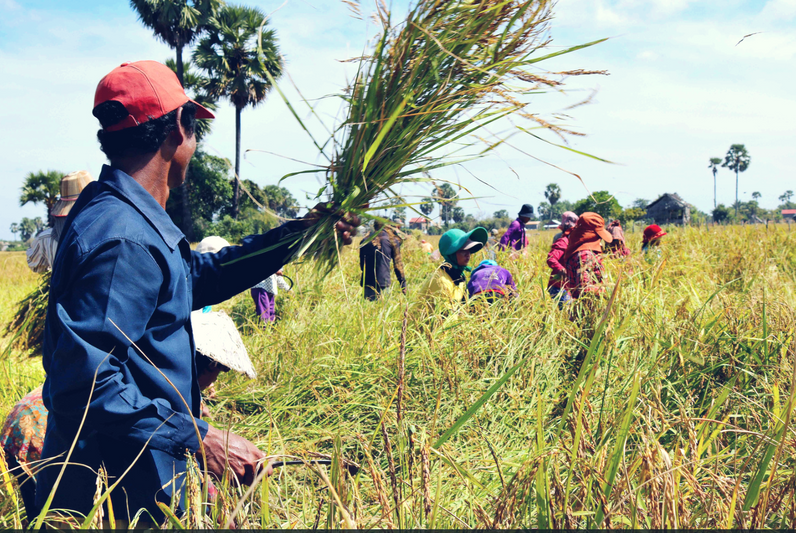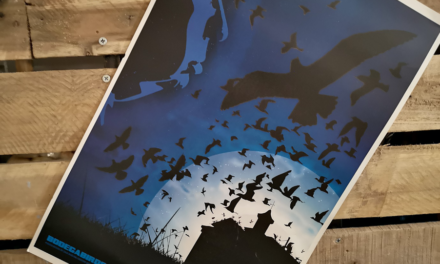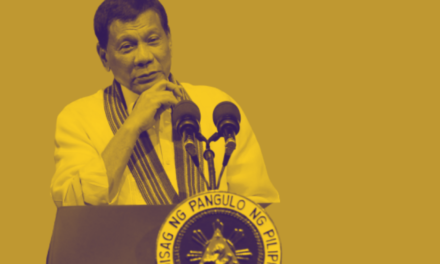The global food system has been very much front and center in the Covid 19 story.
Every one, of course, is aware that hunger is closely tracking the virus as its wreaks havoc in both the global North and global South. Indeed, one can say that, unlike in East Asia, Europe, and the US, in South Asia, the food calamity preceded the actual invasion by the virus, with relatively few infections registered in India, Pakistan, and Bangladesh as of late March of 2020, but with millions already displaced by the lockdowns and other draconian measures taken by the region’s governments.
In India, for instance, internal migrants lost their jobs in just a few hours’ notice, leaving them with little money for food and rent and forcing them to trek hundreds of kilometers home, with scores beaten up by police seeking to quarantine them as they crossed state lines. Estimated at to be as many as 139 million, these internal migrants, largely invisible in normal times, suddenly became visible as they tried to reach their home states, deprived of public transportation owing to the sudden national lockdown. With people dying along the way, a constant refrain in this vast human wave were the desperate words, “If coronavirus doesn’t kill us, hunger will!”
But the food question has been a key dimension of the pandemic in two other ways. One is the connection of the virus with the destabilization of wildlife. The other is the way the measures to contain the spread of the virus have underlined the extreme vulnerability of the global food supply chain.
Covid 19 and Wildlife: The Virus and Ecological Destabilization
The story of how the Novel Coronavirus leaped from its animal host to humans in a wet market in Wuhan still has to be told in detail, and with the ruling Communist Party in China so sensitive to its bungling its first efforts to contain the disease, this may never come to pass. One hypothesis making the rounds is that the original host was a bat while the go-between between the bat and humans was a pangolin or scaly anteater. Bats were also the original hosts for the coronavirus that caused SARS, the disease that hit humans in the early 2000’s, and MERS or “Middle East Respiratory Syndrome” that made its appearance nearly a decade later. The intermediate hosts, however, differed, with the masked civet serving as the intermediate host for SARS and the dromedary camel in the case of MERS.
Virologists and biologists still have to come to a definitive conclusion as to the intermediate host of the Novel Coronavirus that leaped to some humans at the Wuhan Wholesale Seafood Market. What interests us here is the likely backstory. That background is likely to have involved ecological destabilization caused by the expansion of large-scale commercial poaching, industrial agriculture, residential expansion, and other forms of human invasion of the natural habitat of wildlife.
It is not surprising that the passage from pangolins to humans occurred in China, both in the case of the Novel Coronavirus and that of SARS, which started in Foshan municipality in Guangdong Province, for China is the global center of the wildlife trade, much of it illegal. As food systems expert Mahendra Lama points out, China hosts “scores of both licensed and illegal commercial breeding centers supply tigers, porcupines, pangolins, bears, snakes and rats.” A study by the Chinese Academy of Engineering stated that, in 2016, there were more than 14 million people working in the wildlife-related industry that fetched $74 billion.
The Global Food Supply Chain: The Weak Link
The other food-related dimension of the Covid 19 pandemic of critical importance is the vulnerability of the global food supply chain.
With the Covid 19 pandemic poised to make its assault on South Asia and Africa, which health specialists thought to be the continent most vulnerable to the virus, the heads of the World Trade Organization, World Health Organization, and the Food and Agriculture Administration made a joint declaration in late March that since “[millions of people around the world depend on international trade for their food security and livelihoods,” governments had to refrain from taking measures that would “disrupt the food supply chain.” Warned FAO chief Qu Yongdu, “Don’t let Covid-19 crisis become a hunger game.”
What the international agencies feared was a repeat of the 2007-2008 food price crisis when disruptions of the global food supply chain triggered by export restrictions by key grain supplying countries like China, Argentina, Vietnam, and Indonesia forced food prices to skyrocket and added 75 million people to the ranks of the hungry and drove an estimated 125 million people in developing countries into extreme poverty.
Indeed, the current threat to the global supply chain is not just a potential one: the chain is already breaking down at one of its most critical links: migrant labor. The pandemic has exposed the degree to which farming is dependent upon migrant workers, with more than 25 percent of the world’s farm work done by these itinerant laborers. In an excellent survey, Jean Shaoul tells us that some two-thirds of these 800,000 difficult and backbreaking jobs, whose main features are low pay and long hours, are filled in the harvest season in Europe by workers from north Africa and central and eastern Europe. But the Schengen area, comprising 26 European states, has banned external visitors for 30 days and closed many borders.
“Labor is going to be the biggest thing that can break,” Karen Girotra, a supply-chain expert at Cornell University told the New York Times. “If large numbers of people start getting sick in rural America, all bets are off.” Indeed, belonging to an essential industry, farm workers and workers in the downstream food processing and food retail sectors, are in the frontlines of the struggle to contain Covid 19, but many of them are deprived of the most basic protective gear like facemasks and work in crowded conditions that make a mockery of social distance rules.
But the global supply chain is not only threatened by problems at the production and processing ends, but by transportation bottlenecks, especially at key hubs. An FAO report vividly captures a developing problem in Rosario, Argentina, the world’s largest exporter of soymeal livestock feed:
Recently, dozens of municipal governments near Rosario have blocked grains trucks from entering and exiting their towns to slow the spread of the virus…Soybeans are therefore not being transported to crushing plants, affecting the country’s export of soybean meal for livestock. Similarly, in Brazil, another key exporter of staple commodities, there are reports of logistical hurdles putting the food supply chains at risk. Internationally, if a major port like Santos in Brazil or Rosario in Argentina shuts down, it would spell disaster for global trade.
There is no doubt that making sure the global food chain is free of disruptions is a short-term priority to prevent starvation and food riots. What is disturbing though is that FAO and other multilateral agencies can’t seem to get it into their heads that the global food supply chain is contributing to magnifying the Covid 19 fiasco, that its having displaced local and regional food production systems and making countries less self-sufficient in food has made many of them more vulnerable to pandemics and other emergencies. Indeed, ships and planes loaded with food supplies have themselves become some of the most effective transmitters of the disease over long distances.
Extending the Chain
The 2007-2008 food crisis and the 2008-2009 global financial crisis should have shown the multilateral agencies the fragility of global supply chains–of the food system in the case of the first and the industrial system in the case of the second, when the financial crisis led to a global recession that closed down many global industrial subcontractors in China. These developments should have triggered serious interrogation of the resiliency of the global supply chain paradigm that had become the “business model” of western transnational corporations.
Instead of being phased out, however, the food supply chain stretched farther and farther and local and regional food systems withered even more. The FAO estimates that global agricultural trade more than tripled in value to around US$1.6 trillion from 2000 to 2016. More and more, local and regional food systems that used to provide most of domestic production and consumption of food have retreated, in the face of these chains, which are dominated by large processing firms and supermarkets, are capital-intensive, and have a relatively low labor input compared smallholder agriculture. These international and regional giants now constitute roughly 30%-50% of the food systems in China, Latin America, and Southeast Asia, and 20% of the food systems in Africa and South Asia.
Vertical integration and consolidation at the buyer end of export chains, says one influential study, “are strengthening the bargaining power of large agro-industrial firms and food multinationals, displacing decision-making authority from the farmers to these downstream companies, and expanding the capacity of these companies to extract rents from the chain to the disadvantage of contracted smallholder suppliers in the chains.”
What changes to the global food system does the Covid 19 debacle urge on us.
Destabilization of the Wildlife Habitat Must be Halted
First of all, China must stop destabilizing the wildlife habitat. It must be emphasized that China’s exotic culinary practices involving the illegal commercial poaching of wildlife has now produced two pandemics in less than two decades, SARS and Covid 19. Thus Beijing has a responsibility to ensure that China does not become a source for a third. Acknowledging Wuhan’s illicit wildlife connection, Mahendra Lama points out, China’s top law-making body, the Standing Committee of the National People’s Congress of the Communist Party of China, has now banned wildlife trade. Also, Beijing is a signatory to the Convention on International Trade in Endangered Species of Wild Fauna and Flora (CITES), and has imposed wildlife crime penalties of $29,441 and life imprisonment.
However, as Lama, tells us, “wildlife trade continues unabated, and the use of more sophisticated e-commerce platforms with highly coded messaging keeps vigilance at bay.” Serious enforcement, involving hi-tech methods, and not just legislation, must be Beijing’s priority, “so that wildlife traders, supply chain managers, and global storehouses are treated akin to global terrorism actors, booked and dealt severely with when caught.” China, he rightfully stresses, “must realize that its status as a global actor has now become inextricably intertwined with local culinary and commercial practices in the wet markets of many of its cities.”
But there is an even bigger challenge that China has to meet, and that is, it must seriously rethink and possibly shelve its flagship Belt and Road Initiative (BRI). A massive trillion-dollar program of building roads and railways and constructing hydroelectric and coal power plants, and setting up mining ventures, BRI projects threaten over 1,700 critical biodiversity spots and 265 threatened species, according to the World Wildlife Federation, one of these being Sumatra’s Batang Toru forest highlands, one of Indonesia’s most biodiverse regions, where a $1.6 billion hydroelectric power plant poses a danger to the rare Tanapuli orangutang and the critically endangered Sumatran tiger and Sunda pangolin. In the Philippines, the BRI-funded Kaliwa Dam in mountainous Eastern Luzon island is projected to displace some 20,000 indigenous peoples living in 230 hectares of dipterocarp forests well as pose a threat to rare species of flora and fauna in the area, including the white-winged flying fox, slender-tailed cloud rat, civet cats, wild boar, Philippine eagle, and Philippine deer.
Many of these wildlife are hosts to viruses, like those causing SARS and Covid 19, and they are strongly suspected of transmitting them from bats to humans. Thus many projects connected with the BRI will destabilize local ecologies, posing the threat of triggering future pandemics.
Viral transmission is not the only threat posed by the BRI. According to one study, BRI’s network of roads, railways, and pipelines could introduce more than 800 alien invasive species – including 98 amphibians, 177 reptiles, 391 birds and 150 mammals – into several countries along its many routes and developments, destabilizing their ecosystems.
The Chinese government must seriously rethink the BRI and radically modify if not totally eliminate many of the projects connected with it for public health and ecological reasons.
Adopt Food Sovereignty as the Paradigm for Food Production
Probably the most important measure that we propose is to move food production away from the fragile corporate-controlled globalized food supply chain based on narrow considerations such as the reduction of unit cost to more sustainable smallholder-based localized systems. While, in the short term, global supply chains must be kept running to ensure people do not starve, the strategic goal must be to replace them, and some measures can already be taken even as the pandemic is at its height. The local supply system can be reactivated, and farmers and fishers would only be eager to do this, provided of course that they have access to personal protective equipment.
There are solid reasons for reversing the trend towards the globalization of food production and moving towards more food self-sufficiency. However, the rationale goes beyond just ensuring food self- sufficiency to fostering values and practices that enhance community, social solidarity, and democracy. The movement towards an alternative food system has gained momentum over the last few decades owing to the growing realization that the way we produce our food is one of the keys to overcoming the alienation of human beings from one another and the alienation of the human community from the planet.
Led by peasants and smallholders, who still produce some 70 per cent of the world’s food, this movement proposes the alternative paradigm of “food sovereignty,” the cornerstone principles of which include the following:
>Local food production must be delinked from TNC-dominated global supply chains and country should strive for food self-sufficiency, meaning the country’s farmers should produce most of the food consumed domestically, a condition that is subverted by the corporate concept of “food security” that says that a country can also meet a great part of its food needs through imports.
>The people should have the right to determine their patterns of food production and consumption, taking into consideration “rural and productive diversity,” and not allow these to be subordinated to unregulated international trade.
> Localization of food production is good for the climate since the carbon emissions of localized production on a global scale are much less than that of agriculture based on global supply chains.
> Traditional peasant and indigenous agricultural technologies contain a great deal of wisdom and represent the evolution of a largely benign balance between the human community and the biosphere. Thus the evolution of agrotechnology to meet social needs must take traditional practices as a starting point rather than regarding them as obsolete.
To be sure, there are many questions related to the economics, politics, and technology of food sovereignty that remain unanswered or to which its proponents give varying and sometimes contradictory answers. But a new paradigm is not born perfect. What gives it its momentum are the irreversible crisis of the old paradigm and the conviction of a critical mass of people that it is the only way of surmounting the problems of the old system and opening up new possibilities for the fulfillment of values that people hold dear. As with any new form of organizing social relationships, the unanswered questions can only be answered and the ambiguities and contradictions can only be ironed out through practice, since practice has always been the mother of possibilities.
It has been said that one should never let a good crisis go to waste. The silver lining of the Covid 19 crisis is the opportunity it spells for food sovereignty.#
———-
* Walden Bello is an associate of the Amsterdam-based Transnational Institute, which sponsored the study on which this article is based. He is also senior analyst at Focus on the Global South.










